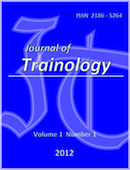Objectives: This study aimed to investigate the influence of increases in toe-flexor strength (TFS) through specific training on sprint and jump performances. Design: This study conducted 8 weeks of training with a two-period cross-over design. Methods: Eleven male sprinters performed TFS training (4 weeks, four times per week) which consisted of 6 strength exercises, and 60-m sprint, squat (SJ), countermovement (CMJ) and rebound continuous jumps (RJ), and TFS normalized to body mass were measured before and after the training period. Spatiotemporal and ground reaction force (GRF) variables during the 60-m sprint were also obtained. Results: There were no significant correlations of the normalized TFS with 50-m sprint time (r = 0.363, p = 0.272), SJ (r = 0.119, p = 0.728) and CMJ heights (r = −0.041, p = 0.906), and RJ height (r = 0.368, p = 0.266), contact time (r = −0.215, p = 0.526) and index (r = 0.380, p = 0.249) at the first measurement. Through the TFS training, normalized TFS increased from 0.331 ± 0.071 kg/kg to 0.384 ± 0.086 kg/kg (16.0%) for the average of two feet. All the sprint and jump performances, as well as the spatiotemporal and GRF variables during sprinting, did not show statistically significant changes through TFS training. Conclusions: These results indicate that, whereas 4 weeks of TFS training could increase normalized TFS for well-trained sprinters, the increase in normalized TFS could not be effective for improving sprint and jump performances for well-trained sprinters.
View full abstract
